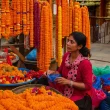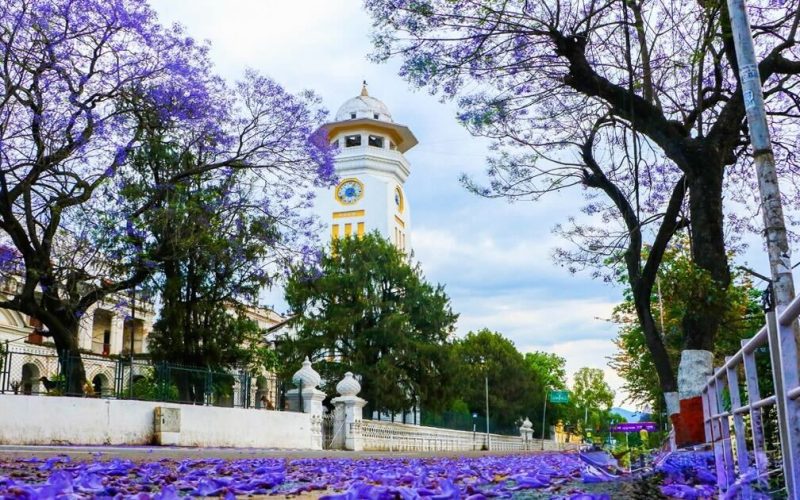Each spring, Kathmandu’s streets burst into hues of lavender-blue, announcing the arrival of jacaranda blooms. The sight is both enchanting and nostalgic, capturing the attention of locals, tourists, and photographers alike. But the journey of the Jacaranda in Nepal is more than just a seasonal spectacle—it’s a story rooted in aristocratic ambitions, cultural integration, and urban transformation.
A Royal Introduction: How Jacaranda Came to Nepal

The history of Jacaranda in Nepal dates back to the late 19th and early 20th centuries during the powerful rule of the Rana aristocracy (1846–1951). The Ranas were known for importing Western architecture, fashion, and flora to showcase their modernity and ties with British India. Among their botanical imports was the jacaranda tree, known for its ornamental value and majestic purple blooms.
According to historical accounts, the first recorded jacaranda planting occurred in the 1920s when Sur Shamsher Rana introduced the tree in his private garden near Darbarmarg, Kathmandu. It’s believed that the saplings were sourced from Darjeeling or other similar hilly regions in India, where jacarandas had already taken root thanks to colonial influences.
Shortly afterward, King Tribhuvan reportedly planted a jacaranda tree in front of the Narayanhiti Palace, reinforcing the tree’s status as a symbol of royalty and elite sophistication.
What Makes Jacaranda Thrive in Nepal’s Climate
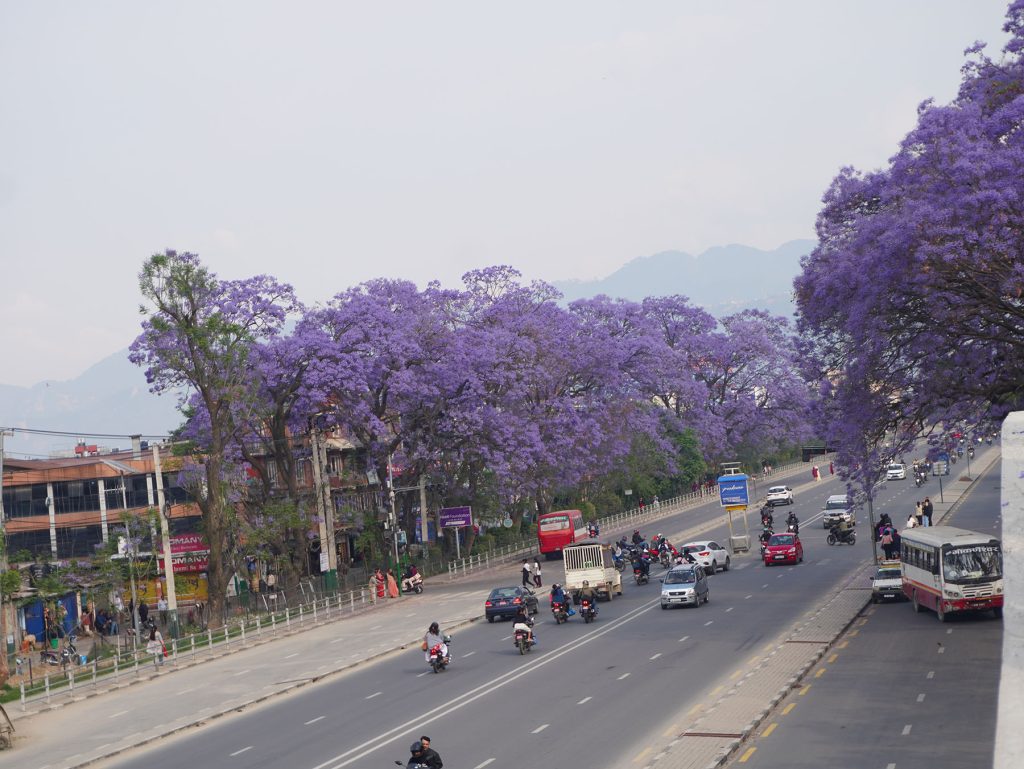
In the early years, Jacaranda in Nepal was a sign of affluence and global exposure. The tree became a favorite among the Ranas for decorating palace gardens and courtyards, chosen not just for its beauty but for what it represented: international taste, modern landscaping ideals, and the power to shape Kathmandu’s urban aesthetic.
The Ranas’ architectural and botanical projects aimed to transform Kathmandu into a city comparable to other colonial outposts, complete with wide roads, water fountains, and manicured gardens. Jacarandas were strategically planted in these newly developed zones to enhance their visual appeal and align the city with international urban trends.
From Palaces to Public Spaces
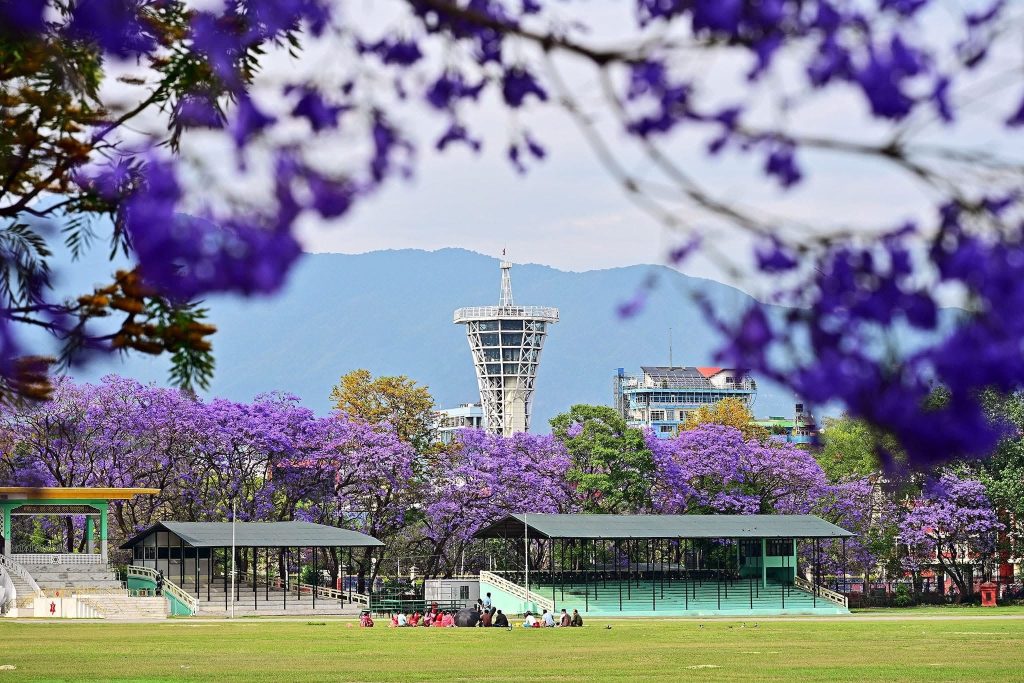
What began as a tree confined to aristocratic gardens soon spread across the capital. As Kathmandu expanded and modernized, the jacaranda made its way into public spaces. The government played a significant role in this transformation—particularly during the 1970s, when large-scale urban planting projects introduced Jacaranda in Nepal on a broader scale.
Tundikhel, a prominent public ground in central Kathmandu, became one of the first public areas to feature rows of jacaranda trees. Their seasonal bloom added aesthetic charm to the open space, turning it into a hotspot for springtime leisure and photography.
Interestingly, some local narratives suggest that jacarandas were planted across the city to beautify Kathmandu ahead of Queen Elizabeth II’s 1961 visit. Although this claim remains debated among historians, it reflects the jacaranda’s growing role as a tree of national pride.
Cultural Significance and Local Identity
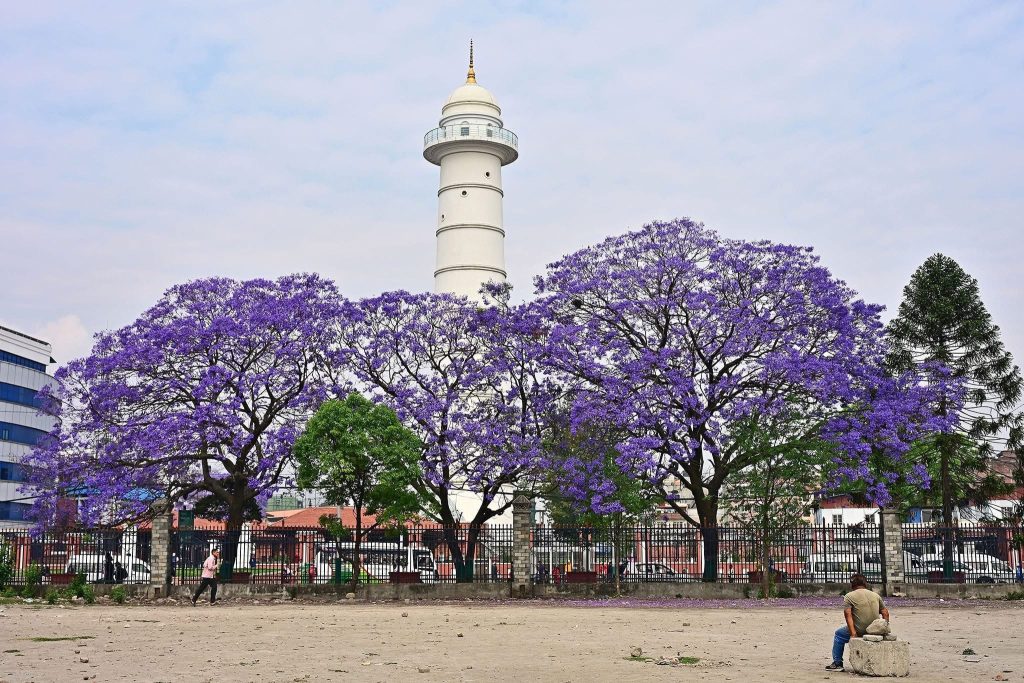
Over time, the Jacaranda in Nepal evolved from a foreign import into a culturally meaningful symbol. Its spring bloom often coincides with Nepali New Year (Bikram Sambat) and other important festivals, symbolizing renewal, beauty, and seasonal transition.
Local communities, especially Newar gardeners and horticulturists, gave the tree a native nickname—‘chakhunba swan’, meaning ‘sparrow flower’—in reference to the visual connection between fallen petals and fluttering sparrows. This vernacular name signifies how deeply the jacaranda has been embraced in everyday life and language.
Ecological Adaptability: Why Jacaranda Thrives in Nepal
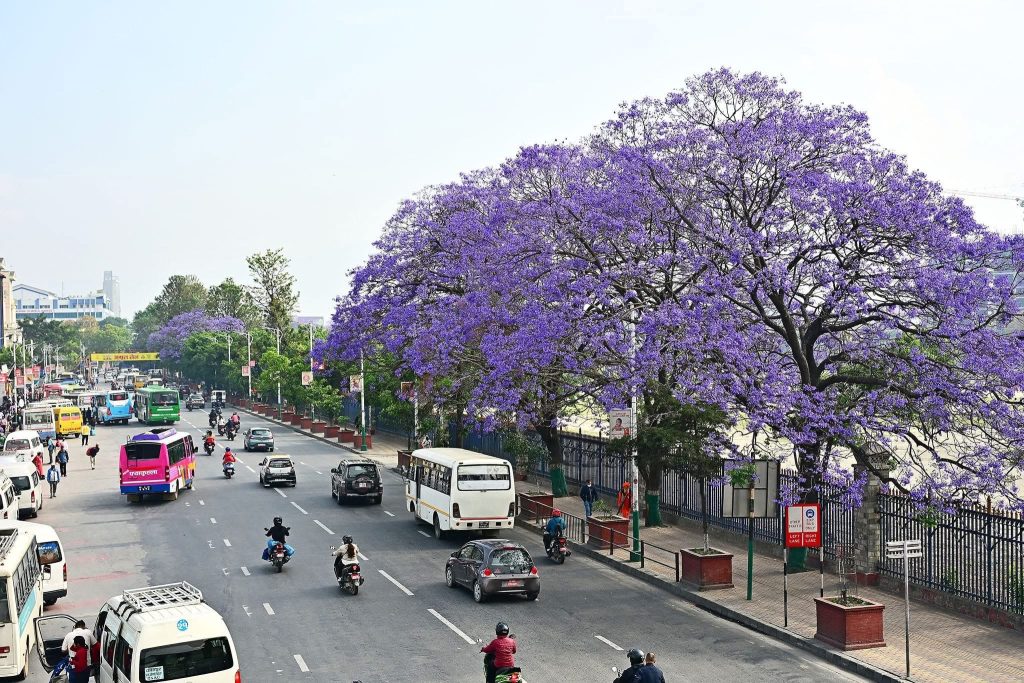
One of the reasons for the widespread success of Jacaranda in Nepal is its adaptability. Originally native to South America, the jacaranda thrives in subtropical climates and requires minimal maintenance once established. Kathmandu’s temperate conditions, along with urban heat increases due to development, have created a suitable environment for the tree.
Additionally, jacarandas are:
- Fast-growing: They can reach impressive heights within a few years.
- Soil-tolerant: They adapt well to various soil types found in the Kathmandu Valley.
- Resilient: They require minimal irrigation and resist many local pests.
These traits made the jacaranda an ideal choice for both private and public planting initiatives.
Is Jacaranda an Invasive Species in Nepal?
Today, Jacaranda in Nepal is inseparable from Kathmandu’s spring identity. The trees around Tundikhel, Singha Durbar, Tripureshwor, and Godawari Botanical Garden bloom in spectacular unison each year, attracting crowds and photographers.
In the age of Instagram and TikTok, jacarandas have gained renewed attention as a seasonal marker, inspiring hashtags like #JacarandaKathmandu and becoming the backdrop for countless engagement photos and travel reels. Their visual impact continues to shape the way people experience and celebrate spring in the capital.
Conservation Concerns and Future Outlook
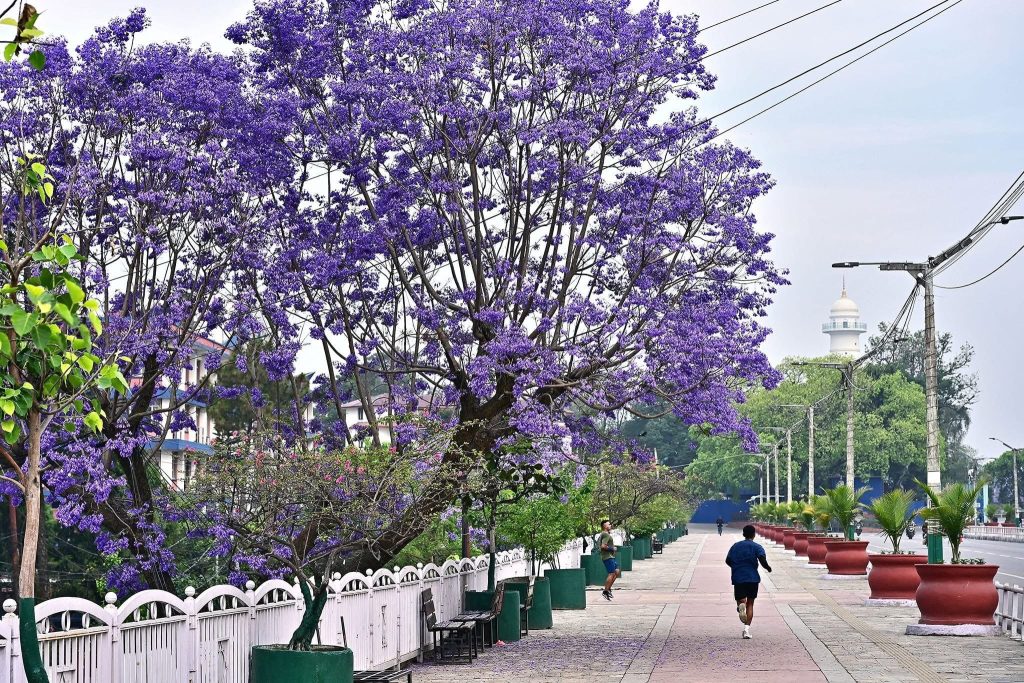
Despite their popularity, jacarandas are not native to Nepal, and some environmentalists have raised concerns about their invasive potential and impact on local flora. While the tree does not pose a severe ecological threat currently, its dominance in urban planning could reduce biodiversity if not managed thoughtfully.
Urban planners and conservationists are now balancing the visual appeal of Jacaranda in Nepal with sustainability goals, encouraging the inclusion of native flowering trees in future landscaping projects.
More Than Just a Pretty Tree
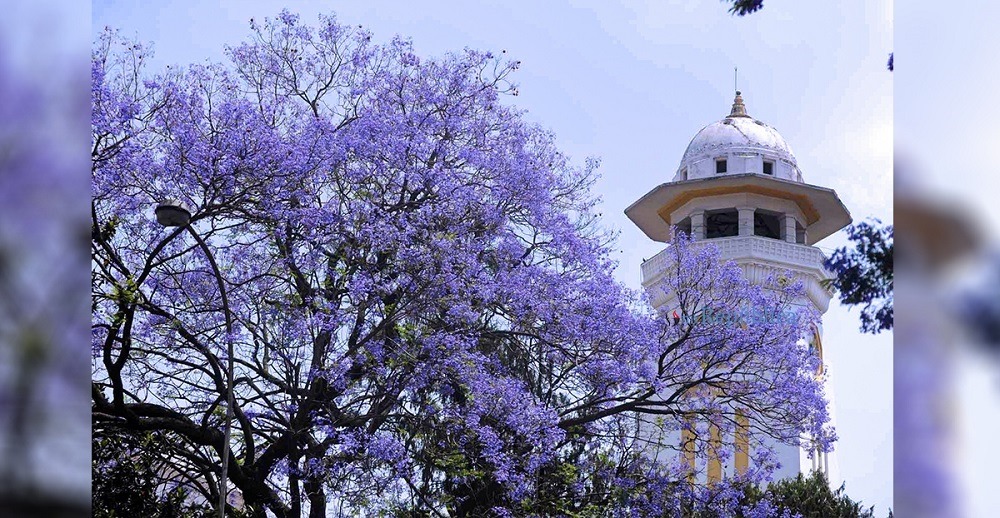
The story of Jacaranda in Nepal is a vivid example of how cultural preferences, political power, and environmental adaptability can intersect to shape a nation’s urban identity. From royal gardens to public parks, jacarandas have transcended their foreign origins to become an iconic part of Kathmandu’s visual and cultural landscape.
As the lavender-blue blooms return each year, they not only beautify the city but also remind us of Nepal’s rich history, evolving identity, and the timeless human love for nature’s elegance.
See Nepal in every scroll: Follow us on Facebook, Instagram, and TikTok for stories that bring the country to life.


